
Red Isabel Intense

Luis R. Fonticoba is a N.C.A. Colorbred Judge who has been breeding and exhibiting Red Factor Canaries Since 1970. His brood stock originates from the best quality Red Factor Canaries from "C.O.M." European Champions, as well as U.S.A. National winners.
If you have any questions related to canaries:
(nutrition / disease-genetics / proper color to pair the canaries / wholesale / other)
LUIS R. FONTICOBA,
N.C.A. CERTIFIED COLORBRED JUDGE
SPRING HILL, FL. (352) 688-2025
PLEASE FEEL FREE TO CALL ANY TIME BEFORE 10:00 PM. EST. TIME
or email: fonticol@hotmail.com









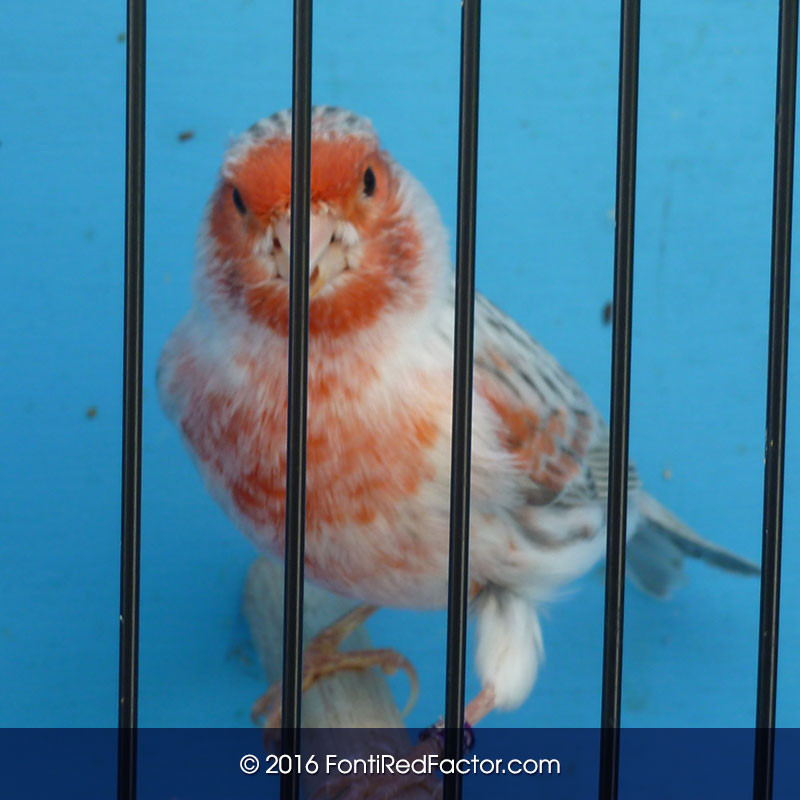



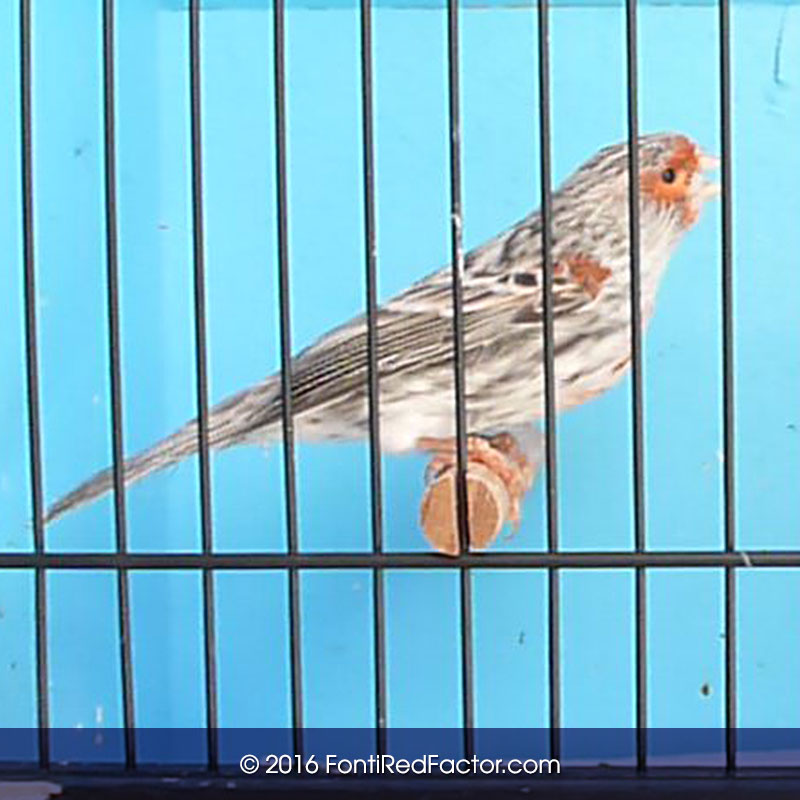



This red factor canary is classified as a Red Agate Mosaic.
Continue reading
This Red Factor Canary is classified as a Red Black Cobalt Mosaic.
Continue reading
These Red Factor canaries are classified as Grey Wings.
Continue reading
These Red Factor Canaries are classified as Red Brown Pastel.
Continue reading
This red factor canary is classified as a Red Lipochrome.
Continue reading
These red factor canaries are classified as Agate Pastel Mosaic canaries.
Continue reading
These Red Factor Canaries is classified as an Agate Pastel Mosaic.
Continue reading
This Red Factor canary is classified as a Rose Ivory.
Continue reading
This Red Factor Canary is classified as a Red Mosaic.
Continue reading
These Red Factor Canaries is classified as a Agate Mosaic Hens.
Continue reading
This Red Factor Canary is classified as a Red Agate Topaz Mosaic.
Continue reading
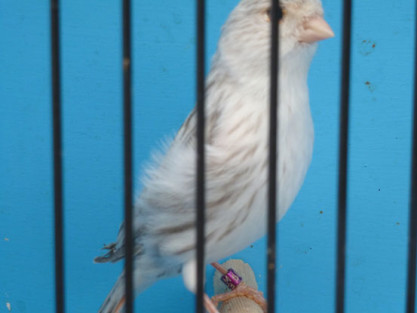

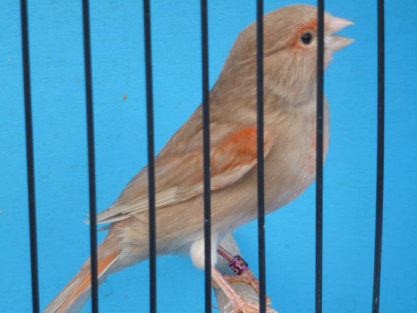
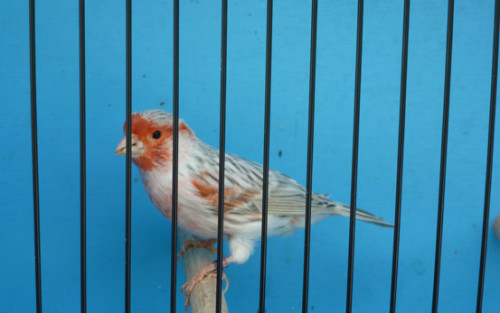

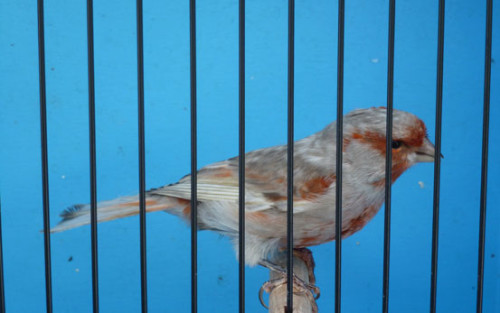
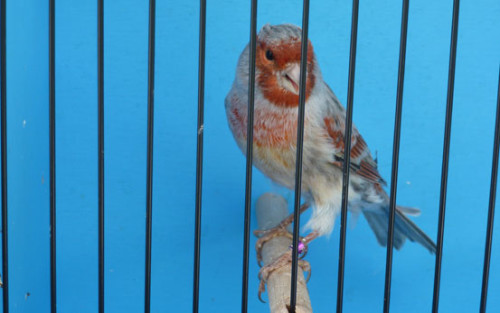
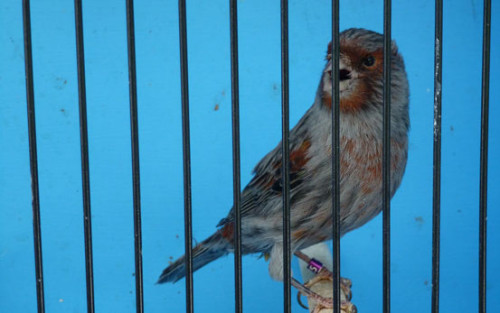
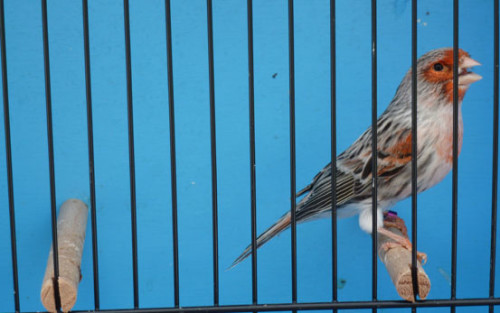
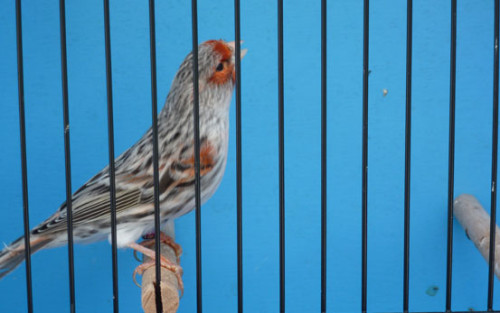
The satinet is the 5th reduction factor.
Perhaps the factor first appeared in the 18th century when Chantelou Hervionx, in his book “El Canario”, mentions the existence of canaries possessing satinet characteristics including red eyes. Modern authors concur the satinet mutation first appeared at the aviary of Mr. Calderon in Argentina during 1966. At this time, the satinet was named Argent-inos. For unknown reasons, the factor was lost to then reappear in the Netherlands during 1969. On this point Mr. Honorio Gimeno Pelegri disagrees. His outstanding book “La Magia del Color” reports the reappearance of the satinet taking place in Belgium.
The satinet is a sex linked recessive factor. This type of heredity requires the male to be homozygous in order to visually display the factor. In other words, the male must receive the genes carrying the factor from both parents. Both of his X chromosomes will carry the factor. For the female to display the sex linked recessive factor on her phenotype, she needs only be hemizygous. Meaning the factor needs to be present in only her X chromosome. Her one X chromosome, upon receiving the factor will automatically show it on her phenotype. The female Y chromosome is empty. Sex linked recessive factors are carried only in the X chromosome. A hen cannot be a carrier is a mutated or normal.
In many reference materials the reader will see the symbols for the sex chromosome X and Y being replaced by Z and W.
The satinet factor will manifest itself in the following forms:
This statement is correct; we must also be aware that:
Certain posters display isabels and brown satinets. Some books show Isabel, agate, black and brown satinets while other reference material denies the existence of the black and brown satinets. The above generates three different theories.
In his book, Colored Canaries, the well known author and international judge Geoff Walker states: There are only agate and Isabel satinets.
Reason:
The satinet factor is a secondary mutation of the already mutated melanin reducing gene which produces agates and isabels.
Therefore the satinet mutation is inseparable from the agate or Isabel mutation. It is then impossible to have brown or black satinets.
This theory is formulated by the well known international judge Mr. Bernandino Yebez (1981). The theory was published in some excellent books by the renown author Mr. Rafael Cuevas Martinez and states there are only agate and Isabel satinets. Brown and black satinets do not exist.
Reason:
The satinet gene is located very close to the dilution gene which produces agates and isabels; therefore a cross-over is unlikely. It has been proven that when the distance between two allele genes located in the same locus is too short (measured in Map Units or Centi-Morgans); a cross-over is not likely to take place. According to this theory, the satinet and the dilution gene are alleles and are always together in the same locus. The oxidation gene is not allele to them, occupies another space on the chromosome. For a given specimen to be a black or brown satinet; the satinet gene would have to jump (cross-over) to the locus hosting the oxidation gene. There is no record of such cross-over ever happening making the black or brown satinet non-existent.
As the satinet gene exists only paired to the dilution gene, the satinet factor will only manifest itself on the agates and isabels. The satinet gene will not separate from the dilution to join the oxidation gene and form a black or brown satinet.
This theory appears in some books by the writer and international judge Mr. Rafael Cuevas Martinez.
There are only black satinets (diluted satinets) and brown satinets (typical satinets). The agate and Isabel satinets are impossible. Only the typical is exhibited and recognized by the C.O.M. as satinets. This theory seems to be more accepted and supported by breeders and researchers of renown and international prestige such as Pomarede, Filleul, Kop, Conalli, etc.
Reason:
The theory proposes that the satinet gene is allele to both the dilution and the oxidation genes. The three occupy the same locus (chromosome space)
This is known as polialelism; the three genes in the same locus form an allelic series. The satinet gene is recessive to both the dilution and oxidation genes therefore will only appear in the phenotype when it is present in all X chromosomes. The male will be homocygous and the female hemizygous. Consequently the gene for dilution (agate or Isabel) cannot be present at the same time with the satinet. It is then clear that there cannot be an Isabel or agate satinet. Would only be for oxidation and satinet being a black or a brown satinet.
All females of these crossings will be satinets, hence would not help settle the argument.
In the black series canaries the satinet:
In the future I will gladly share the results of my experiments.
Homozygous
Refers to an individual organism that possesses two identical alleles at a locus.
Hemizygous
Possession of a single gene at a locus.
Category
Refers to as the difference between a Intense, Frosted or Mosaic canary
Allele
One of two or more alternative forms of a gene.
Locus
Position on a chromosome where a specific gene is located
Not all sources listed in the reference list at the end of this treatise include the satinet factor but are included in the reference list to give the reader an idea of the depth of my research.
Luis R. Fonticoba
N.C.A. Sanctioned COLOR BRED JUDGE.
questions: info@fontiredfactor.net

 Luis R Fonticoba is a N.C.A. Color Bred judge, exhibitor and breeder of canaries including the classic as well as the new mutations, but specializing in the Red Factor Canary since 1970. Breeding an average of 1,250 babies per year, Luis Fonticoba’s brood stock originates from the best quality Red Factor Canaries that are “C.O.M.” European Champions, as well as U.S.A. National winners.
Luis R Fonticoba is a N.C.A. Color Bred judge, exhibitor and breeder of canaries including the classic as well as the new mutations, but specializing in the Red Factor Canary since 1970. Breeding an average of 1,250 babies per year, Luis Fonticoba’s brood stock originates from the best quality Red Factor Canaries that are “C.O.M.” European Champions, as well as U.S.A. National winners.Great Ways to Find Canaries For Sale By Beth Richardson. Are you looking to buy a canary? If you’re looking for Canaries for Sale, here are some great places to look:
– Craigslist / Kijiji These are online classifieds, and these days have more ads than most newspapers. Search for Canary or Canaries, and chances are you’ll stumble on some offers! If doing a private sale, and visiting people with ads at their houses (or yours) always notify somebody that you’re meeting with a stranger, and check in with them at a specific interval – this way if anything happens, somebody will know to send for help.
– Google Bird Canary for Sale Search Google for “Canaries” “Canary” and “Canaries for Sale” as well as your town or county. Google is great at coming up with this information, and if anyone has posted an offer, you should be able to find it. Also try searching for the above words with “breeder” as well as your town or country. Chances are you’ll find an offer with these words
– Pet Stores Bird Canary for Sale Pet Stores often carry Canaries (as well as other birds) and may be able to refer you to where you can find a breeder or bird for sale. It’s good to have a relationship with your local pet store, as this will help ensure that you’re taking care of your canary in the long run
– Pet Shelters Bird Canary for Sale While these are normally for dogs and cats, some canaries do end up at pet shelters. Phone and ask. This is a great way to adopt a pet in need of help! Too many times pets are abandoned and left with a shelter.
– Vets While vets do not sell pets, they may be aware of people around who may have canaries for sale. Simply phone them and ask if they can refer you to anyone who might be able to help! Beth Richardson is a long time Canary owner and loves all things involving birds, singing, and the color yellow.
Canaries-forsale.com <--visit